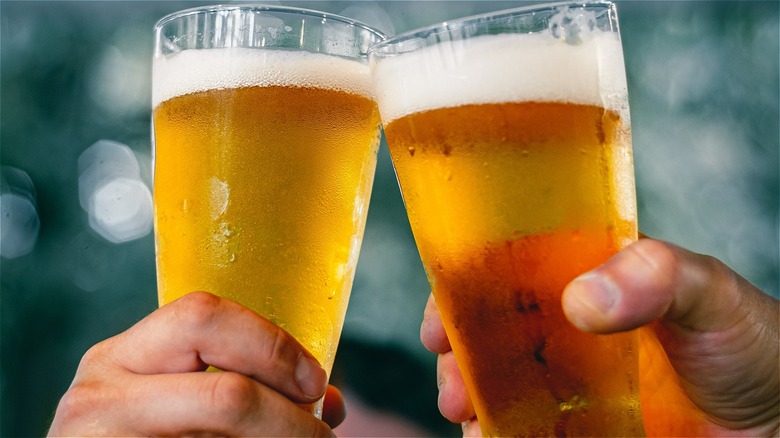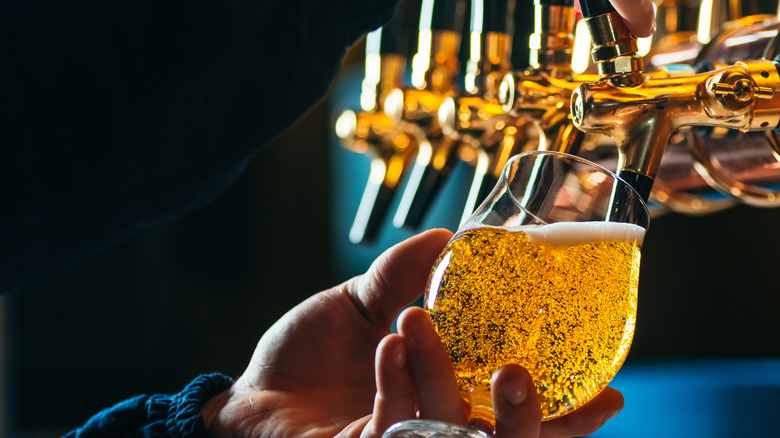Prohibition 'Near Beer' Came With A Quirky DIY Step
When you think of Prohibition Era boozing, you probably think of Al Capone, speakeasies, and bathtub gin. And you definitely aren't wrong to — it's one of the sexiest and most salacious parts of the 1920s. But many Americans found ways to get their kicks without all of the glamour and Tommy guns, but they still had to go underground to skirt law enforcement.
Prohibition was officially instituted from 1920-1933, states Britannica. It was called for due to a variety of reasons, like curbing rates of domestic violence cases and reducing alcohol-related crimes, notes Vox. To help citizens cope with their boozy cravings, brewers were allowed to make nonalcoholic beer, or "near-beer" which involved an extra step in the brewing process where the alcohol in the beer was boiled off. But as we all know, necessity is the mother of invention and brewers were not about to let their customers go completely dry for 13 years. Here's how they worked around the rules of Prohibition and made near-beer a little bit closer to the real stuff.
Not-so-near beer
Beer is created during a brewing and fermenting process that transforms malt, barley, and hops into a delicious, lightly bubbling beverage. While hard liquor like gin was the main target of Prohibition — a ban on "intoxicating liquors," per History – beer and the brewers who made it quickly found themselves in the crosshairs when the Volstead Act called for beer to be brewed with no more than 0.5% alcohol by volume, reports Alcohol Policy. So when it came time to boil the beer in the brewing process and brewers were actually taking this step, they would let the alcohol cook off, leaving the beverage boozeless and with its flavors less than optimal.
But the alcohol didn't just evaporate into the air, at least not with watchful, innovative brewers keeping watch. Instead, they'd capture the alcohol in a separate vessel, writes Beer History. And then customers who came in for their near-beer would be given a small vial containing pure alcohol that the drinker could then inject back into their beer in the comfort of their own home.

